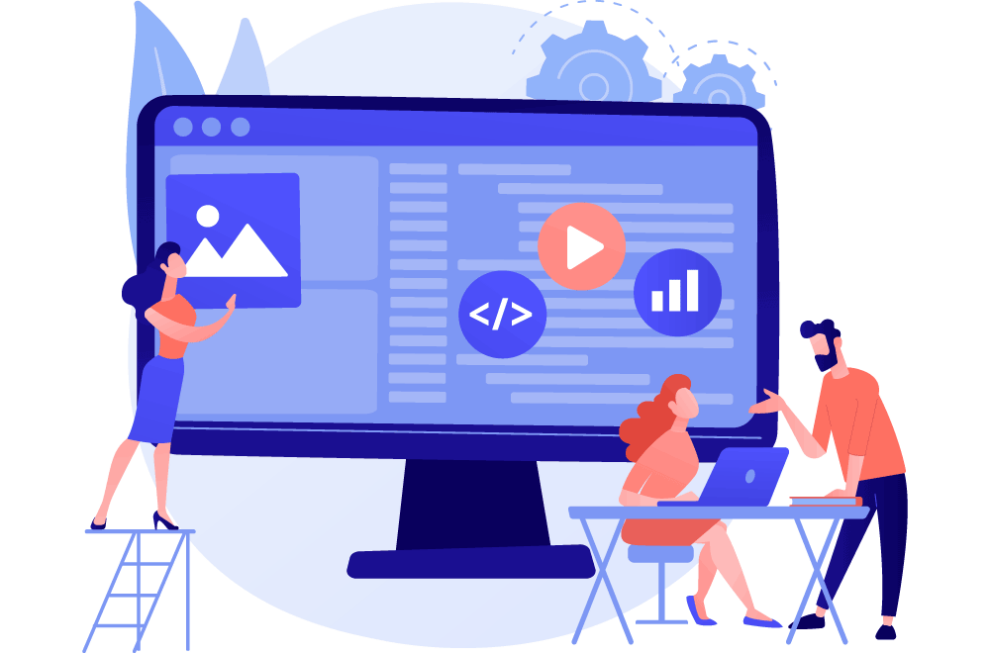No code platforms can save businesses a lot of time and money while delivering applications to users much faster than traditional platforms. On the other hand, low code platforms offer a hybrid approach that allows some customization while keeping the application maintenance costs low.
Why choose between low or no code when you can have the functionality of both in one platform, a citizen development platform.
Why low code and no code?
The low-code movement started in the late 1980s when applications were created via a graphical user interface (GUI). A program had to be written by hand and then compiled into a language that computers could understand in this process. This was extremely time-consuming because it required an expert in multiple languages, including computer science, business, and design.
Trying to decide which option is right for your business? Here are a few things to mind when finding out about no code vs. low code:
Technical Differences
No-code platforms are pre-built and pre-configured for rapid application development, whereas low-code platforms require coding skills to develop an application.
Low-code platforms require coding knowledge from developers to configure applications, while no-code platforms do not require any coding knowledge.
No-code platform tools have drag & drop features that make it easy to build apps with little or no coding knowledge, whereas low-code platforms require coding knowledge.
Low code platforms use structured query language (SQL), while no code platforms use JavaScript Object Notation (JSON). Low code platforms also have an integrated debugger that allows developers to test applications before they are deployed, while no code platforms do not have this capability.
No Code Platforms: No Code Platforms are primarily used by non-technical users without any programming experience to create web-based applications. The main advantage of the no code platform is the ability to create web based applications with very little or no programming experience
Total Product Development Time Spent On The Job
No Code: 2 Months
Low Code: 4 Months
Agile: 6 Months
One of the main differences between these three approaches to software development is how much of the application’s design happens before the coding starts. With No Code and Low Code, the bulk of the design happens before coding begins. In Agile, most design occurs during coding. Most Agile practitioners use some form of User Story Mapping as an accepted method for collecting user requirements. As these are broken down into tasks and assigned to team members, you end up with a lot of discussions around how something should be designed or implemented. This is a major point of differentiation between Agile and No Code/Low Code – the amount of time spent on design activities during the project lifecycle.
Time to market
No-code platforms offer an easy way to deliver fully functional applications with no programming required. Low-code platforms let you leverage open-source software and an existing code base to build your application. The result is an app you can deliver faster but with more work upfront.
Cost
While low-code platforms do require some upfront cost for the development process, it’s generally much less than what you’d pay for custom-built software from scratch. No-code platforms typically come with a price tag attached but will save you the costs of a professional development team.
Verdict
Low code and no code software development platforms have been heralded as the next big thing in application development. These tools are designed to make it easier for developers to build applications without having to write a lot of code. Truly low-code platforms require you to use the graphical interface, while no-code platforms let you develop applications using only a web browser. Low-code platforms usually allow you to do things like creating forms, pop-up windows, and other interactive elements. You can also use them to create reports, run queries against databases, and generate text files.
No code platforms take this idea further by allowing you to create entire applications at the push of a button, with no coding required. Instead of dragging boxes around on a screen, these tools let you select from options already available in the system. The platform then builds an application based on your input.
Both low-code and no code software development platforms offer the ability to rapidly develop custom applications that can be deployed in minutes instead of days or weeks.








Add Comment